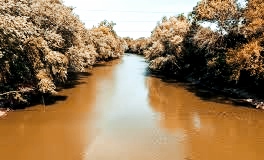
The longest river in the world is the Nile, stretching across the continent of Africa for over 6,853 kilometers. It is the world’s longest river, and it originates in the Great Lakes region of Central Africa, draining from Lake Victoria and flowing northward through Uganda, Ethiopia, Sudan, and Egypt before finally emptying into the Mediterranean Sea. The Nile serves as a lifeline for millions of people in this region, as it supplies much of their drinking water and irrigation for farms.
The Nile is also an incredibly important river historically, serving as a major transportation route in ancient times. It was the source of much wealth and power for the Egyptian civilization, and its water was used for many of the great monuments and cities of antiquity. It also played a major role in the development of the great civilizations of Mesopotamia and the Fertile Crescent.
The second longest river in the world is the Amazon, stretching across South America for a distance of 6,400 kilometers. Originating in the Andes Mountains of Peru, it flows eastward and then northward through Brazil before finally emptying into the Atlantic Ocean. The Amazon is incredibly important to the biodiversity of South America, as it is the home to an incredibly diverse range of plant and animal life. It is also an important source of hydroelectric power, as many of its tributaries are used to generate electricity.
The third longest river in the world is the Yangtze, stretching across China for a distance of 6,300 kilometers. Originating in the Tibetan Plateau in Qinghai Province, the Yangtze flows eastward and then southward before finally emptying into the East China Sea. The Yangtze is an incredibly important river for China, as it is used for irrigation and transportation, and it is also one of the most important sources of hydroelectric power for the country.
The fourth longest river in the world is the Mississippi, stretching across the United States for a distance of 6,270 kilometers. Originating in northwestern Minnesota, the Mississippi flows southward and then westward, draining from Missouri and Arkansas before finally emptying into the Gulf of Mexico. The Mississippi is an incredibly important river historically, as it was one of the major transportation routes of the early settlers of the United States. It was also a major source of agricultural and industrial production in the 19th and 20th centuries, and it still serves as an important waterway today.
The fifth longest river in the world is the Yenisei, stretching across Russia for a distance of 5,539 kilometers. Originating in the Mongolian Plateau in Mongolia, the Yenisei flows eastward and then northward, draining from Lake Baikal before finally emptying into the Arctic Ocean. The Yenisei is an incredibly important river for Russia, as it is used for transportation and hydroelectric power, and it is also a major source of fresh water for much of the country.
These are just five of the world’s longest rivers, but there are many others that are worth mentioning. The Paraná River in South America, the Yellow River in China, and the Ob River in Russia are all important rivers that also measure over 5,000 kilometers long. And of course, there are thousands of smaller rivers and streams throughout the world that are all important in their own unique ways. Ultimately, rivers are an essential part of the global environment, and are an important source of sustenance and life.








No comments:
Post a Comment
Thanks for your valuable comments and keeping touch sharing our posts from my PHOTO COLLECTION.